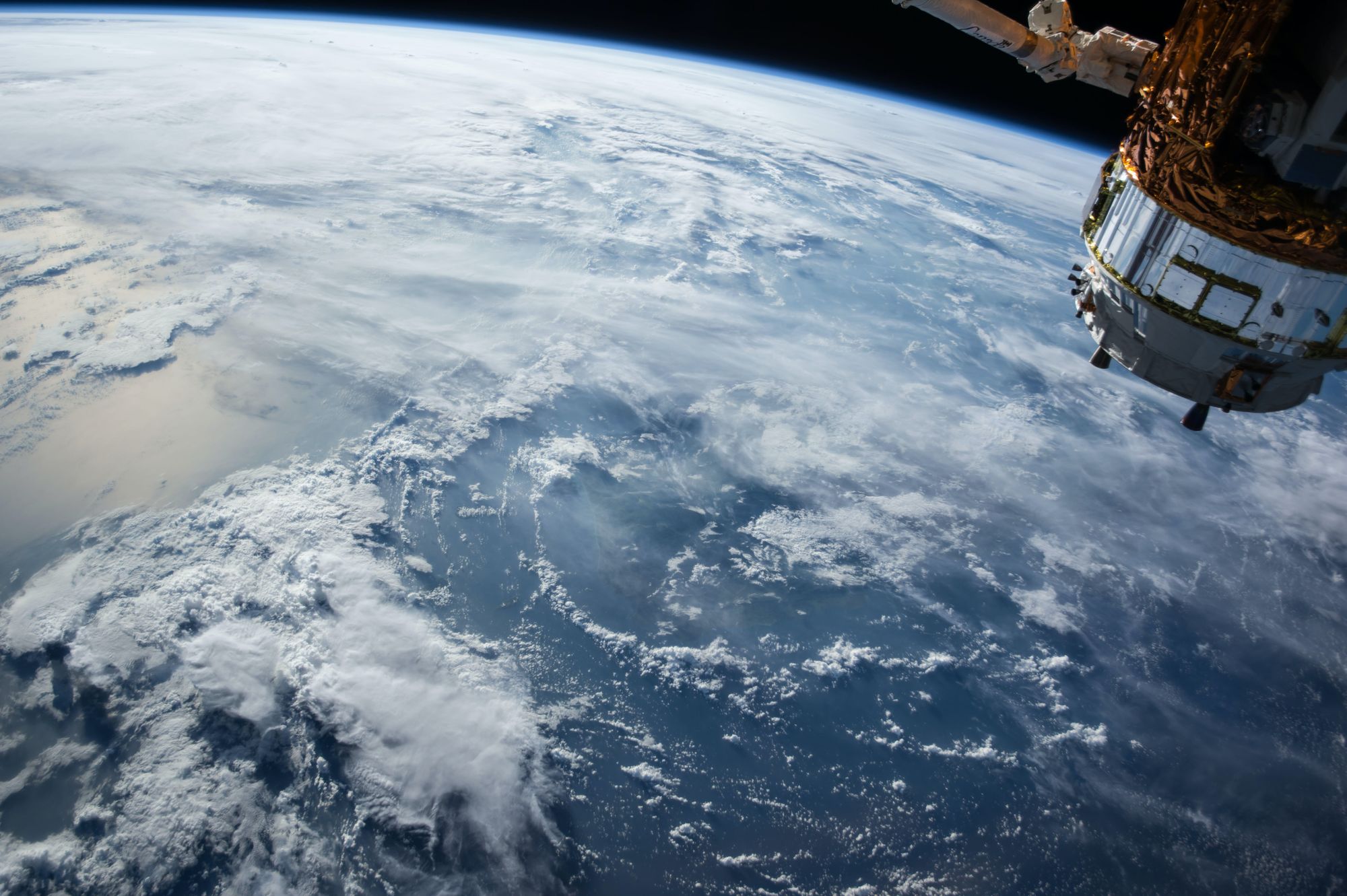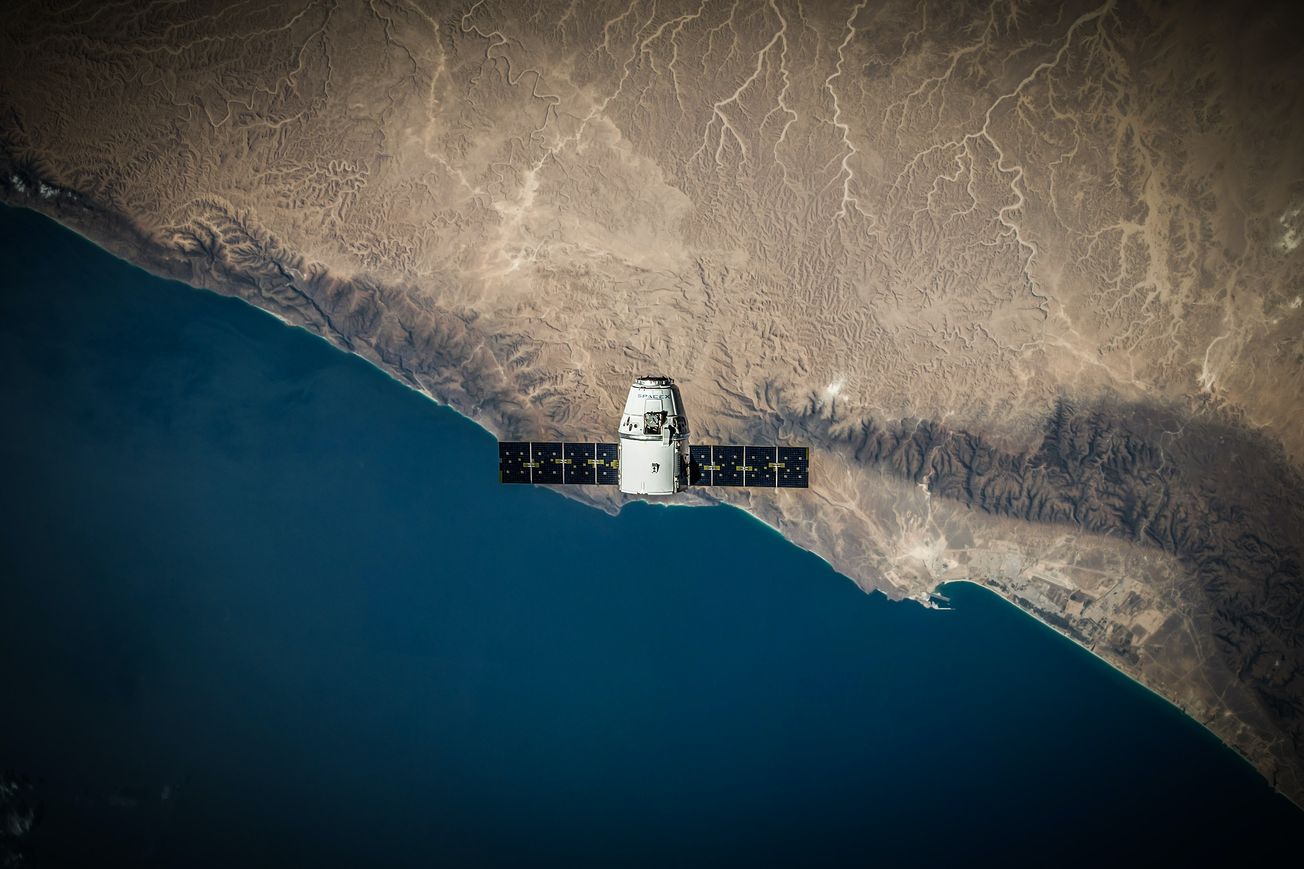By Carissa Wong, 4th Year PhD Cancer Immunology
A new report, led by researchers at the University of Bristol, outlines the importance of space-based Earth Observation satellites in monitoring the causes, effects and management of global warming. The report aims to drive useful policy change at the 26th ‘conference of the parties’ (COP26) meeting to be hosted this November, in Glasgow.
Countries around the globe initially met to discuss the threat of global warming at the first COP meeting in 1995, agreeing on a need to limit greenhouse gas emissions to prevent harmful human-induced climate change. Two decades later, the outcome of the 21st COP meeting was the landmark Paris Agreement, signed by 190 countries, which came into force in 2016.

Under the Paris Agreement, countries have agreed to limit the increase in global temperature, compared to pre-industrial levels (usually considered as the period of 1850-1900), to ideally less than one and a half degrees Celsius, and at least well below two degrees Celsius.
It is worth noting that any rise in global temperature carries dangerous consequences. While a two degrees rise would have pretty catastrophic effects, such as the death of 99 per cent of today’s coral reefs, a one and a half degrees rise would save just a small fraction of them.
Yet, a step in the right direction is better than nothing. To meet the agreed temperature goals, countries are aiming to achieve net-zero emissions by 2050; to hit this target, the UK is attempting to reduce greenhouse gas emissions by 68 per cent by 2030.
As with any serious goal, measuring progress is key. As part of the Paris Agreement, a global stocktake (GST) process was outlined to enforce a five-yearly review of the impact of collective efforts to curb climate change.
The first GST will take place in the next couple years and, importantly, the evaluation will be aided by scientific data presented in the latest report from the Intergovernmental Panel on Climate Change (IPCC), which assesses and interprets the latest climate science. Findings from Earth Observation (EO) satellite data will play a vital role in determining action points.

This new report, led by the University of Bristol, highlights the importance of policy changes which can improve the use of Earth Observation (EO) data to monitor the impact of countries’ efforts.
EO satellite data provides our best picture of worldwide temperature and geographical changes that result from global warming. Over the seas, it enables researchers to track winds, waves, sea levels, surface temperatures and biological activity. On land, it helps monitor crops, forests, soil moisture, urbanisation, snow and ice cover, landslides, and flooding.
Therefore, EO satellite data will also be critical to enable rapid responses to adverse weather events—such as flooding and wildfires—which threaten human lives and are becoming more common as the climate warms.
‘Earth Observation satellites are our eyes on the planet. Without them we would be virtually blind to the magnitude and timing of climate change and to human interference with the fragile ecosystems that we all depend on’, explained Jonathon Bamber, co-lead author of the report and Professor of Physical Geography at the University of Bristol’s School of Geographical Sciences and its Cabot Institute for the Environment.
The UK are leading developers in technology that can harness EO data to form actionable information. However, benefits from this technology have yet to be maximised.

The report outlines three key ways to improve the use of EO technology:
- As a leader of environmental science, the UK should help other countries to develop technology, methods and skills that enable them to use EO data to achieve the goals of the Paris Agreement. This includes provision of education and training in EO science.
- International cooperation and coordination between space agencies, national funding bodies, Non-Governmental Organisations (NGOs) and other organisations should be enhanced to ensure EO resources are free to use and accessible to non-experts.
- International financial cooperation does not currently exist to get the most out of EO data and technology worldwide, but a system to enable this should be created. This point echoes a key aim of the Paris Agreement that ‘developed countries should take the lead in providing financial assistance to countries that are less endowed and more vulnerable’.
Co-lead author Paul Bates, Professor of Hydrology at the University of Bristol and Associate Director of the Cabot Institute for the Environment, who leads the university’s COP26 activities, explained ‘Free-to-use satellite data can transform the ability of countries around the world to manage the threat of climate change, but only if countries like the UK share their expertise and technology.’
Earth’s lungs are shrinking, as humans keep interfering with the Amazon’s ability to regrow
UK universities are playing a unique and crucial role to enable a productive outcome from this year’s COP26 meeting, providing scientific expertise to aid the international community. As we have seen during this pandemic, translating scientific advice into policy change is never easy, but the climate crisis is happening now, so let’s hope the right decisions are made.
Featured Image: SpaceX
What policies are you hoping will be implemented at COP26 this November?









